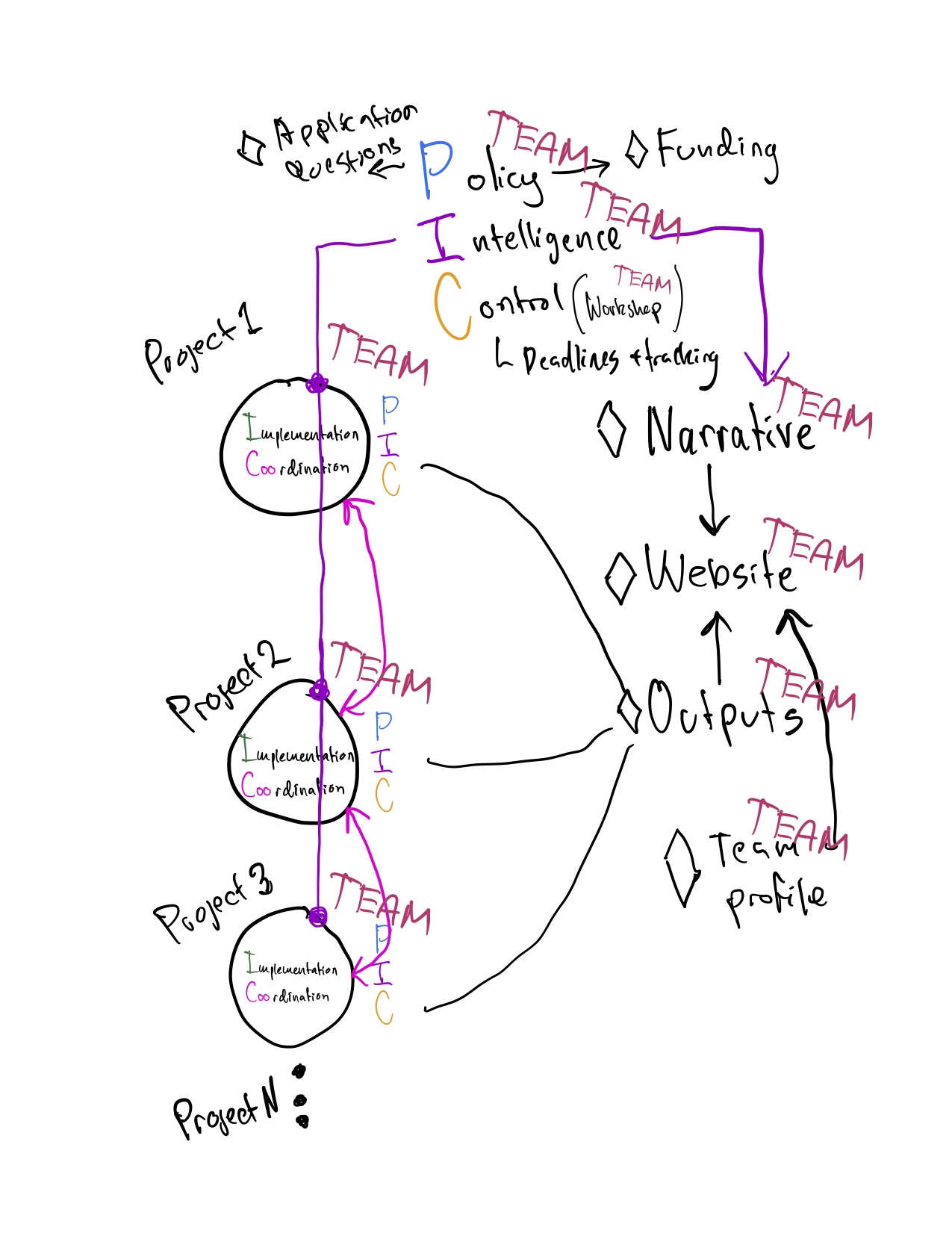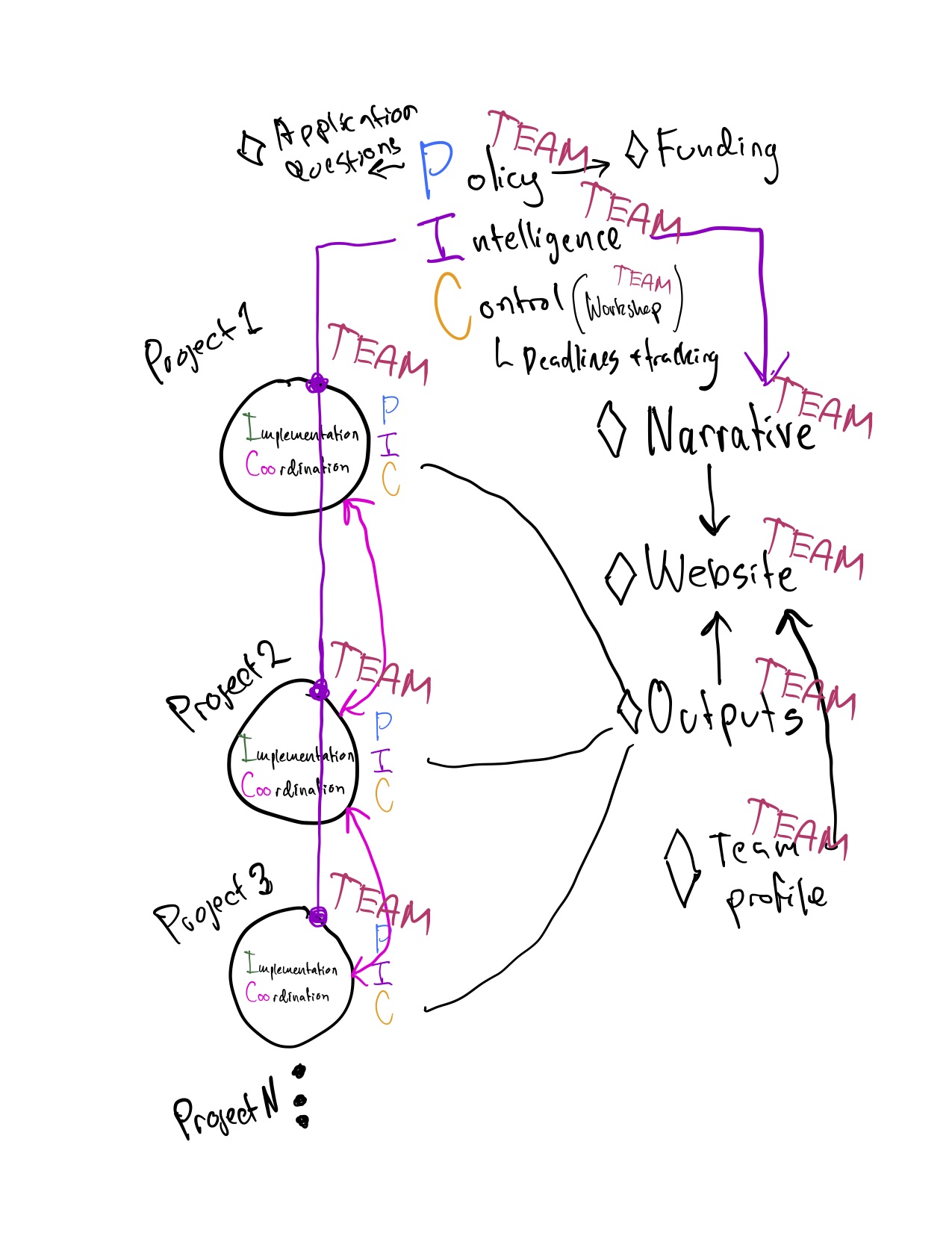it's micha.love
Epistemic Engines
22 May 2022 - Istanbul

Epistemic Engines
is a series of projects about networked knowledge production in times of crisis. The project stream first emerged in the wake of the collapse of the Strelka Institute, within which I was a fellow of their The Terraforming research program. In the wake of the collapse, I helped organize a multidisciplinary and international group of institutionally displaced fellows to continue producing knowledge together. The systems I developed drew upon governance and feedback principles first articulated in mid 20th century cybernetics, by scholars such as Stafford Beer, Jay Forrester, Vannevar Bush, and Heinz Von Forrester. It is also rooted in research I conducted with the Australian National Library, lead by Genevieve Bell, that looked at the relevance of cybernetics to libraries and archives in the 21st century.
Playing with structure
The goal is for communities to play with structure and governance using computation as a pliable medium that can enhance their existing goals. The idea is that by manifesting distributed groups’ ideas as computational artifacts, it initiates a new mode of feedback by which the group can better come to know itself and its ideas. For this reason, EE is built on largely pre-existing frameworks, which themselves could be transformed into distributed protocols as needed.
The stack
Epistemic Engines projects use a simple stack primarily built with Notion, d3.js, and flask to organize information. The stack is optimized for a rapid prototyping approach that can intuitively engage a wider community creatives and researchers in co-creating a knowledge base without any requisite technical knowledge. Using this paradigm, we’ve been able to quickly create custom CMSs, organizational structures, and archives.
Viable Systems Model (VSM)
After the dissolution of the Strelka Institute caused by the war, a group of about 30 researchers from the Terraforming program decided to continue working together. We decided to apply for a grant that would enable this, but we only had 10 days to prepare the application. Our group was also distributed across four continents, and our hierarchy as entirely horizontal, as we had all been peers in the dissolved program, and held equal stake in our desire to continue working together.
I proposed we use Stafford Beer’s Viable Systems Model as a mode of organizing our activities in a nimble and responsive way. It allowed us to act within different roles in the group, as well as making explicit any hierarchies and communication relations. Drawing on classic feminist text The Tyranny of Structurelessness by Jo Freeman, we made the decision to err towards explicit structure, so that decisions were made transparently, lines of communication were formalized, and decisions would not be made by only those with an awareness of a tacit, informal structure.
I then drew up an organization consisting of a series of functional project teams, a narrative team, a website team, a “meta/policy” team, and workshop team. Over the course of 10 days, these teams coordinated to produce three prototype projects, a website, an organizational model, budget, coherent brand identity and narrative, and a competitive grant application. It was widely recognized as a success because of how well we self-organized and produced, although ultimately we did not receive the grant.
Our organizing and rapid-work style was abetted by communication and organization tools like Notion and Telegram.
Below is a diagram based on Safford Beer’s VSM model, and how it was interpreted by me for organizing for the grant application.

Caption: VSM Diagram as envisioned by Stafford Beer

Caption: VSM Diagram as envisioned for General Context, by Johan Michalove, March 2022

Caption: Screenshot of VSM experimental governance structure designed for General Context.
See the live VSM structure and its documentation to learn more.
gcMemex
Is a knowledge network I developed with a few overlapping networks of collaborators. Using Notion, Observable, d3.js, and Flask, I created a collaborative environment for distributed groups to collectively build a knowledge network. The network reflected the topology of sub-groups within the larger organization, and allowed us to visualize how information flows between different groups of thinkers and makers.
By using a Notion database as a backbone, I was able to create a highly accessible interface for the group to collectively build the network. Every group member could add nodes and edges, and see the network update in real time. The network was also designed to be a tool for reflection, by allowing us to visualize the group’s structure and aggregate knowledge bases within it.
While the group is long disbanded, this fragment of the network remains online below. Browse it to get a taste for the kinds of ideas, collaborations, and conversations that took place.